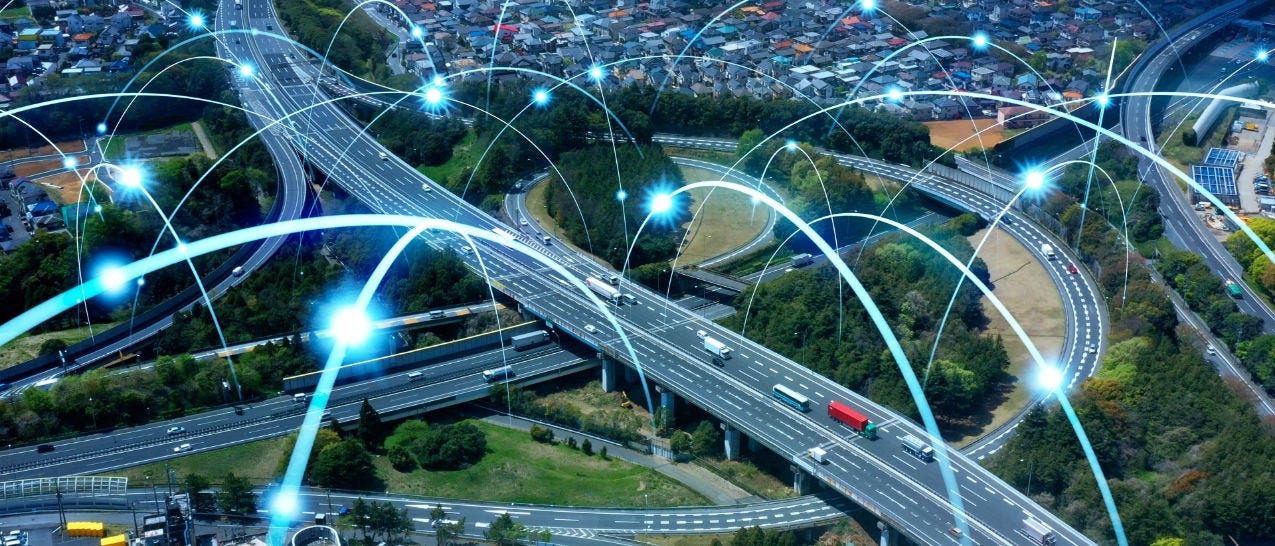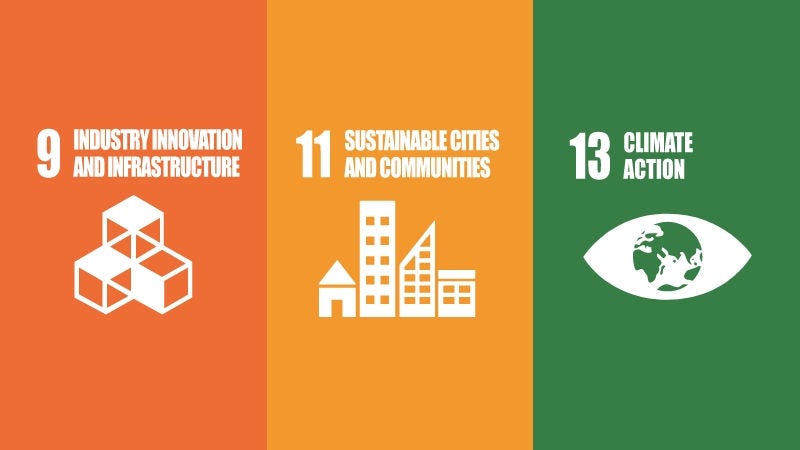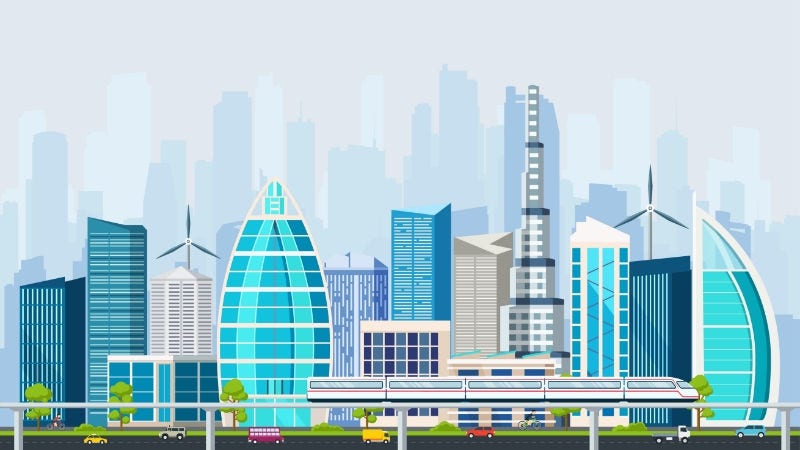The Mobility-Environment Ecosystem
Transport accounts for more than half of India’s total petroleum consumption and more than 25% of the overall energy needs2
The transport sector of India is the third biggest contributor towards greenhouse gas (GHG) emissions3
The transport sector accounts for 14 per cent of our energy-related CO2 emissions3
How Hitachi is Driving Sustainable Mobility in India
Digital rail systems are proven to offer many social and environmental benefits in line with SDG goals:
Enhance passenger safety through robust train protection and real-time monitoring of trains
Energy savings through speed regulation, dynamic headways
Hitachi’s Key Mobility Projects Powering Sustainable Mobility:
Strengthening Freight Transport
Railways is also one of the safest and environment-friendly modes for transporting freight. According to Indian Railways, they generate up to 80% less carbon dioxide and consume 75-90% less energy for freight traffic than road transport4. Currently, Railways’ occupies only 26-27 per cent share5 in overall freight traffic, while the majority of the freight is still carried through road transport which contributes to environmental pollution.
To create a cost-effective and sustainable freight transport system, Indian Railways aims to increase the modal share of Railways to 45% in freight traffic under its National Rail Plan (NRP) 20306. The ambitious Dedicated Freight Corridors (DFC) project by the Government of India will play a decisive role in putting the nation on a greener growth trajectory and in achieving Net Zero carbon emissions in the long run.
Hitachi Rail India is partnering with the Indian Railways in driving the success of the DFC project and in achieving the modal shift of reducing carbon footprints through greener railways. Hitachi Rail India is providing its robust:
Signalling, remote diagnostic, and telecommunication system for the 915 route km (Rewari in Haryana to Ahmedabad in Gujarat) line involving 31 freight stations and associated terminals.
Train Protection and Warning System for 1337 route km (Rewari-Haryana-JNPT-Mumbai) line involving 43 freight stations. This is an Automatic Train Protection system, based on the worldwide proven European Train Control System (ETCS) for enhanced railway system safety and security, and efficient high speed freight train operations.
As per a report published by Niti Aayog, the DFC project is estimated to save 3 billion TOE (tons of oil equivalent) of energy, thus paving the way for eco-friendly transport.
Accelerating EV Adoption for Zero Emissions Transport
Driven by environmental commitments, there is a growing international momentum around Electric Vehicle (EV) adoption. As a cleaner alternative, e-Mobility is being hailed as a cornerstone of building a sustainable mobility ecosystem. In this endeavour, Hitachi is harnessing its e-Mobility portfolio to accelerate India’s EV transition and drastically reduce the carbon footprint of the automobile sector.
- EV Charging Solutions
- Battery Innovations
EV Charging Solutions
At Hitachi, we understand how important a robust EV charging infrastructure is for accelerating fleet electrification and adoption of EVs by individual owners. Leveraging its expertise in Green, Digital and Innovation, Hitachi Energy has developed its innovative flash-charging technology – Grid-eMotionTM Flash – which quickly tops up the battery while passengers get on and off the bus. The technology can save as much as 1,000 tons of carbon dioxide on a line covering 600,000 km per year and enable operating cost savings of 30% versus an equivalent diesel-transit system7.
Further, Hitachi Energy has developed its ground-breaking grid-to-plug EV charging system: Grid-eMotionTM Fleet. The solution marks a game-changing shift from a charger-product based approach to a charging-system based approach and contributes towards reducing carbon emissions by harnessing renewable energy through grid integration and by optimizing energy consumption from the grid using digital energy management system.
Battery Innovations
Battery of an Electric Vehicle (EV) constitutes almost half of an EV cost. Efficient, affordable, and more durable batteries are all set to bring down EV costs for mainstream EV adoption. Hitachi India R&D Centre is collaborating with the global R&D team to develop innovative solutions such as Range Estimation, Route Planning, Battery Risk-Analysis, Life Prediction, and Optimized Operation and Charging Recommendations, which will significantly contribute towards lower costs and longer life of batteries.
Additionally, Hitachi India R&D Centre is developing sustainable and innovative technologies that encourages the adoption of “Battery as-a-Service” or subscription-based business models that allows EV buyers to purchase the vehicle without the battery and lease it from any independent operator.
Sources:
- https://www.unep.org/explore-topics/sustainable-development-goals/why-do-sustainable-development-goals-matter/goal-11
- https://static.pib.gov.in/WriteReadData/specificdocs/documents/2021/jun/doc20216441.pdf
- https://www.niti.gov.in/decarbonising-transport-redefining-mobility-policies-india
- https://www.fois.indianrail.gov.in/RailSAHAY/#:~:text=Transporting%20goods%20by%20train%20also,competitive%20in%20the%20global%20market
- https://www.business-standard.com/podcast/current-affairs/how-did-railways-turn-around-the-freight-train-122101200229_1.html
- https://pib.gov.in/Pressreleaseshare.aspx?PRID=1707245
- https://www.hitachienergy.com/in/en/products-and-solutions/substations/railway-and-urban-transport-electrification/grid-emotion-charging-solutions-for-e-mobility/grid-emotion-flash














